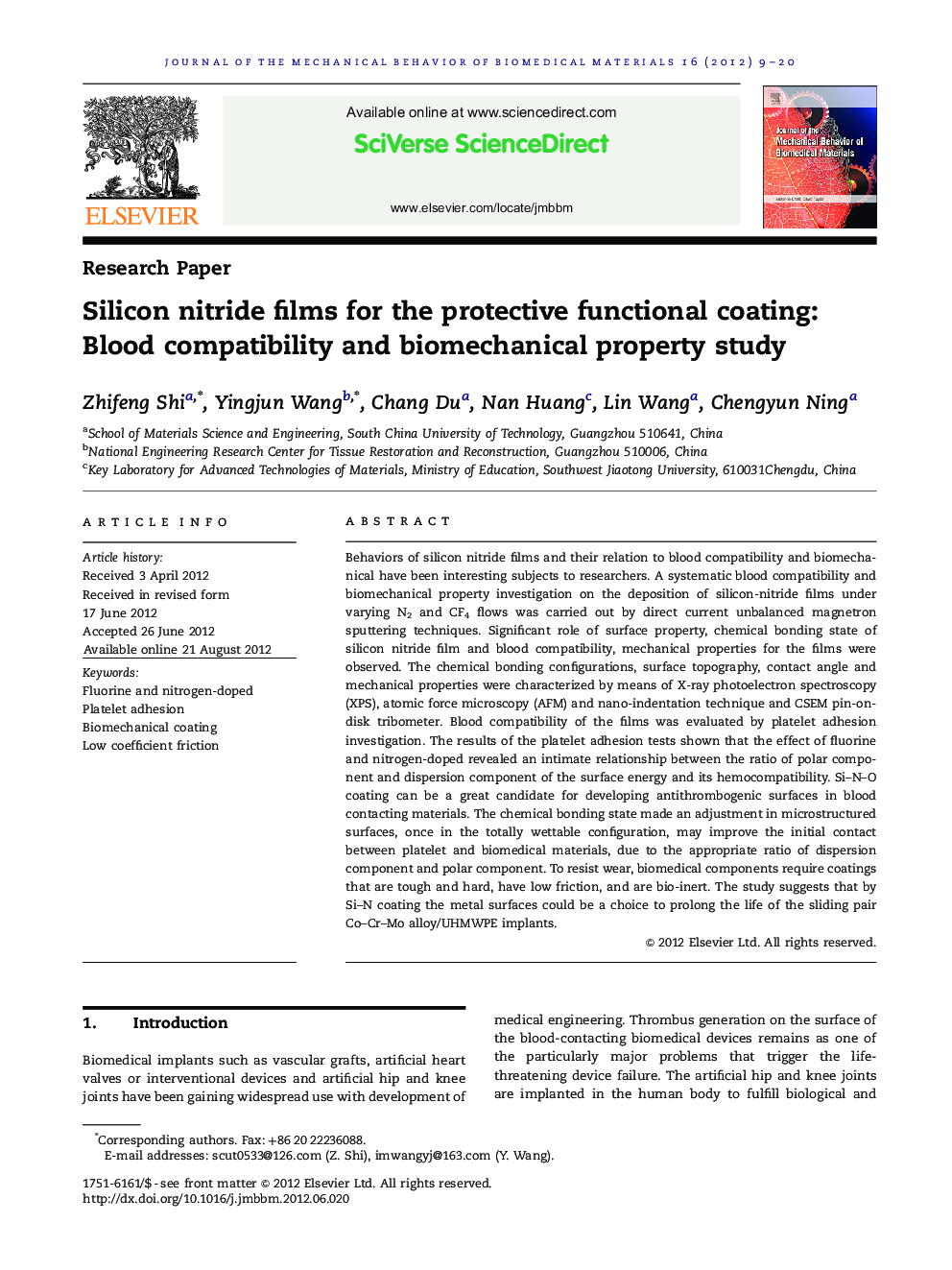| کد مقاله | کد نشریه | سال انتشار | مقاله انگلیسی | نسخه تمام متن |
|---|---|---|---|---|
| 810945 | 1469129 | 2012 | 12 صفحه PDF | دانلود رایگان |

Behaviors of silicon nitride films and their relation to blood compatibility and biomechanical have been interesting subjects to researchers. A systematic blood compatibility and biomechanical property investigation on the deposition of silicon-nitride films under varying N2 and CF4 flows was carried out by direct current unbalanced magnetron sputtering techniques. Significant role of surface property, chemical bonding state of silicon nitride film and blood compatibility, mechanical properties for the films were observed. The chemical bonding configurations, surface topography, contact angle and mechanical properties were characterized by means of X-ray photoelectron spectroscopy (XPS), atomic force microscopy (AFM) and nano-indentation technique and CSEM pin-on-disk tribometer. Blood compatibility of the films was evaluated by platelet adhesion investigation. The results of the platelet adhesion tests shown that the effect of fluorine and nitrogen-doped revealed an intimate relationship between the ratio of polar component and dispersion component of the surface energy and its hemocompatibility. Si–N–O coating can be a great candidate for developing antithrombogenic surfaces in blood contacting materials. The chemical bonding state made an adjustment in microstructured surfaces, once in the totally wettable configuration, may improve the initial contact between platelet and biomedical materials, due to the appropriate ratio of dispersion component and polar component. To resist wear, biomedical components require coatings that are tough and hard, have low friction, and are bio-inert. The study suggests that by Si–N coating the metal surfaces could be a choice to prolong the life of the sliding pair Co–Cr–Mo alloy/UHMWPE implants.
Journal: Journal of the Mechanical Behavior of Biomedical Materials - Volume 16, December 2012, Pages 9–20